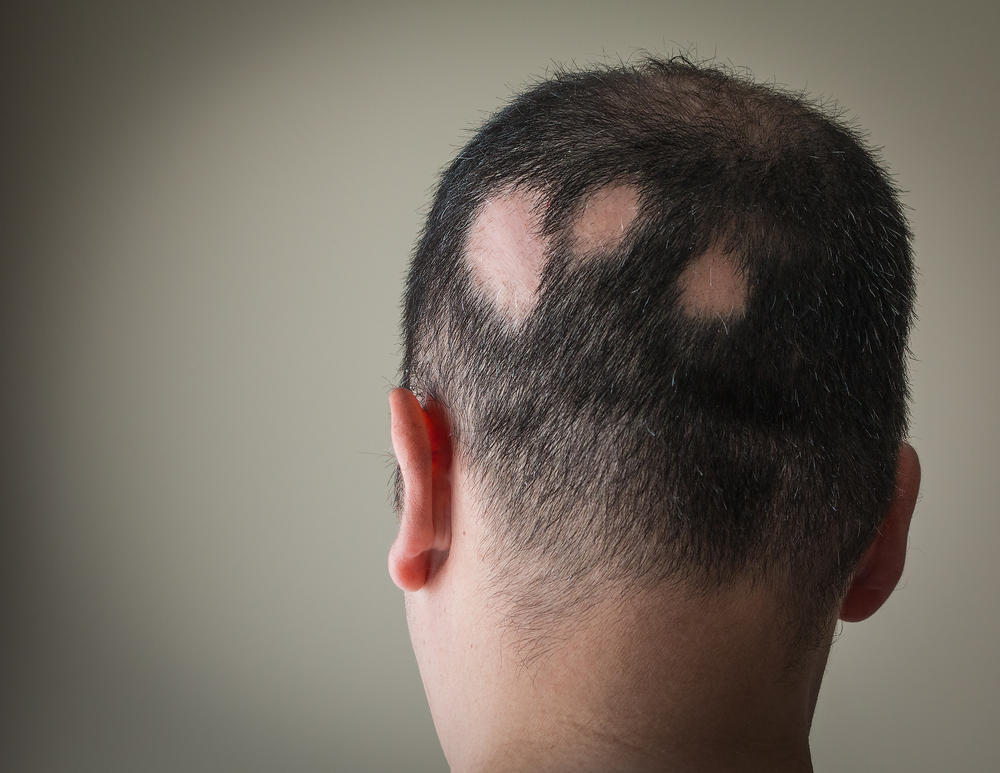Hair loss at a younger-than-usual age can be caused by a condition called alopecia, which happens when the immune system attacks the hair follicles. Start a search to learn about alopecia, from its causes and symptoms to its diagnosis and treatment.
Losing your hair happens naturally to both men and women during the aging process. But what if you’re still young and are suddenly struggling with hair loss? Alopecia could be the reason for this, so it’s worth doing some research on the disorder.
What is Alopecia?
Alopecia is an autoimmune disorder that causes hair loss on the head – but it can also cause hair loss on the face and other parts of the body. Though it occurs most often on the scalp, alopecia can also cause bald patches or hair loss on your eyebrows, beard, or even your entire body depending on the severity of the condition.
Autoimmune disorders like alopecia occur when your immune system mistakenly attacks your own body. Specifically in alopecia sufferers, the white blood cells target and shrink the hair follicles, slowing or even stopping hair growth. This autoimmune disorder can occur in varying degrees.
Early Warning Signs of Alopecia
The first sign of alopecia you may notice is abnormal hair loss in the shower or in your hairbrush. This is typically followed by the most common early symptom: small, coin-sized bald patches appearing on the scalp, which can occur quickly over the course of a few days or slowly over weeks or months. In some cases, your skin may itch or burn before the hair loss happens.
Symptoms of Alopecia
After the hair is gone, the skin appears smooth and healthy. For others, the bald patches grow and can cover most or all of their scalp as well as the face and body. Oftentimes any hair that does grow may appear abnormal. Some people grow white hairs, “exclamation mark hairs” where the hair follicles get narrower at the bottom, or “cadaver hairs” where the follicle breaks before reaching the surface of the skin.
Symptoms of alopecia can also be seen in the fingernails and toenails. Some sufferers of the condition notice dents, white spots or lines on their nails, or find that nails become dull and brittle.
Alopecia Causes
Experts can’t really say for sure what leads the body to attack the hair follicles and cause alopecia. However, it’s believed that the condition may be caused by a combination of genetic and environmental factors. You’re more likely to develop alopecia if you have a close family member who suffers from it.
But, unlike many conditions which only require genes to be passed down from one parent, alopecia is a polygenic disease (both parents need to contribute certain genes in order to pass the disease along to children). Research also shows that alopecia occurs more often in people with a genetic history of other autoimmune disorders.
Regrowing Hair Lost from Alopecia
Re-growing hair after being diagnosed with alopecia can be unpredictable. Some alopecia sufferers may start to regrow hair quickly without any treatment and may never have any further issues. For others, regrowth may be slow and take years; it could even be cyclical, as you may experience hair loss and regrowth in different places over the course of your lifetime.
Others still may never grow their hair back at all. While there is no cure for alopecia, there are many ways you can slow or perhaps reverse hair loss.
Steroid Treatments
Perhaps the most common way to tackle an alopecia diagnosis is through steroid treatment, which is best applied in mild cases. It’s an option for you if less than 50 percent of your scalp hair has been lost.
During steroid treatments, the bare skin is injected, using fine needles filled with cortisone. You may also be able to apply a topical steroid cream or gel or take oral steroids, they can often lead to unpleasant side effects such as acne, weight gain and menstrual cycle changes in the case of female patients.
Medication-Based Treatments
There are a number of topical medications that are often prescribed to treat hair loss from alopecia.Anthralin ointment, which is a tar-like substance that’s also commonly used to treat psoriasis, can encourage hair growth if applied to bald patches daily. Some patients find that anthralin ointment can irritate and discolor their skin. but the side effects are typically short-lived.
Other topical medications, such as Minoxidil or Ciclosporin, may also be recommended and combined with one another for maximum effectiveness.
Learn More About Alopecia Today!
Alopecia is a condition that can impact individuals of all ages, and understanding its signs, causes, and available treatment options is crucial. To gain a comprehensive understanding of alopecia and how it might affect you or someone you care about, it’s essential to continue your exploration online.
Delve deeper into this topic to uncover valuable insights, treatment options, and support resources that can make a meaningful difference in the lives of those dealing with alopecia. Keep your curiosity alive and discover the wealth of information available online to better address this condition and its effects.
